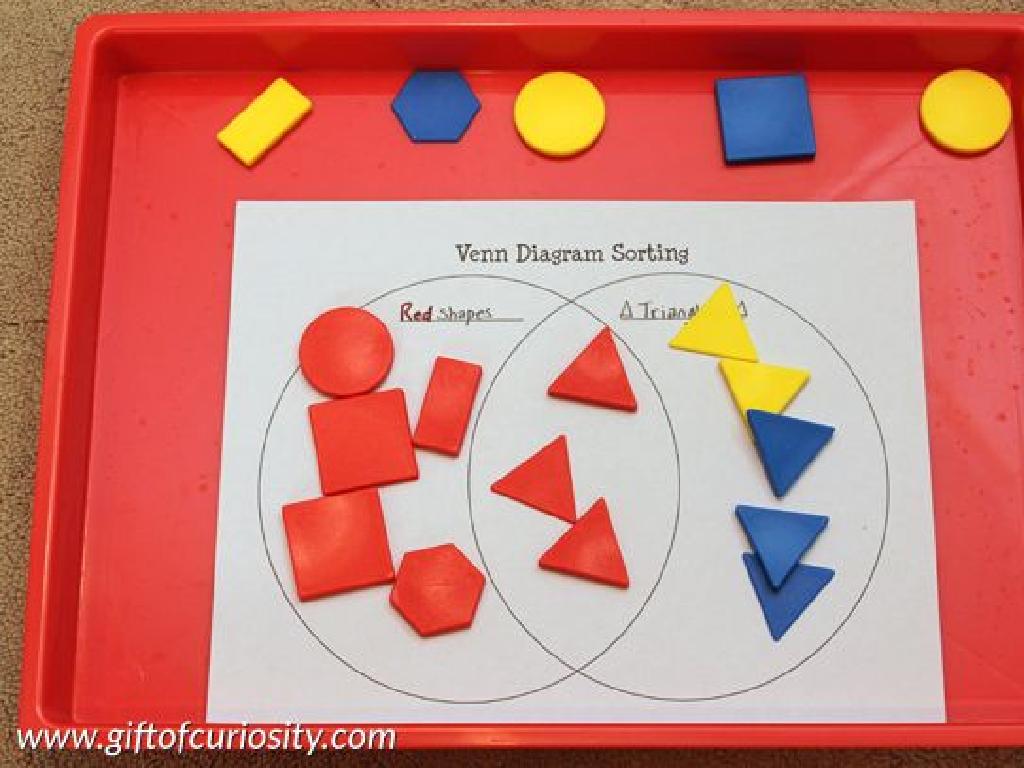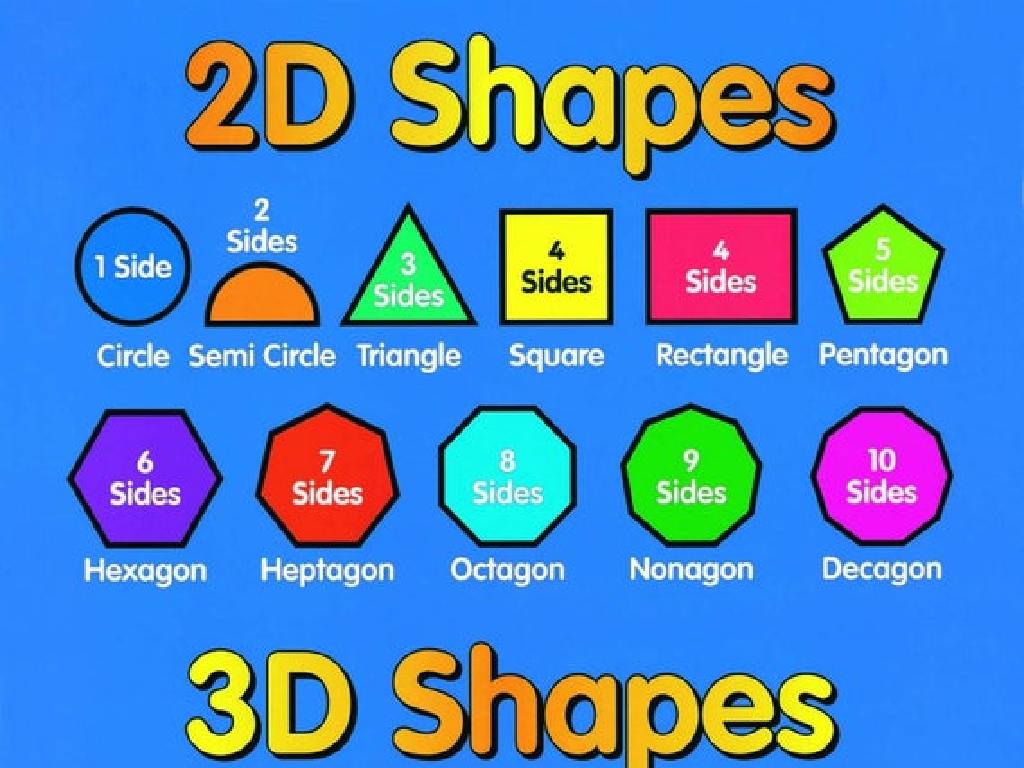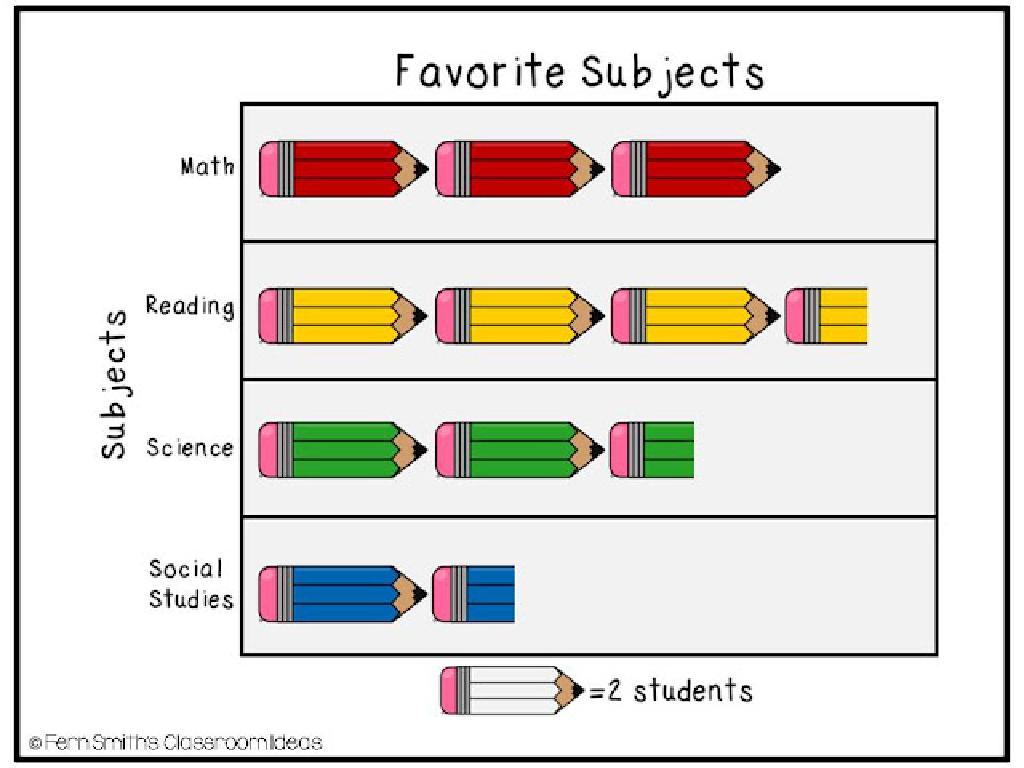Use Possessive Pronouns
Subject: Language arts
Grade: Sixth grade
Topic: Pronoun Types
Please LOG IN to download the presentation. Access is available to registered users only.
View More Content
Possessive Pronouns in Our Daily Language
– What are possessive pronouns?
– Words that show ownership, like ‘his’, ‘hers’, ‘ours’.
– Differentiating pronouns and possessives
– Pronouns replace nouns; possessives show who owns something.
– Examples of possessive pronouns
– ‘His book’, ‘her pencil’, ‘our house’ – the pronoun tells us who it belongs to.
– Using possessive pronouns correctly
– We say ‘mine’ not ‘my one’, ‘ours’ not ‘our ones’ when speaking about possessions.
|
Begin the lesson by defining possessive pronouns and their function in showing ownership, which is a key concept in understanding their role in language. Highlight the difference between regular pronouns and possessive pronouns, emphasizing that possessive pronouns are used to replace nouns to indicate possession without repeating the noun. Provide clear examples of possessive pronouns in context to illustrate their use. Encourage students to practice using possessive pronouns in sentences, correcting common mistakes, and understanding how these pronouns enhance clarity and brevity in communication. Prepare exercises where students replace nouns with the correct possessive pronouns and create their own sentences using possessive pronouns.
Understanding Possessive Pronouns
– Define possessive pronouns
– Words that show ownership without using a noun
– Examples: mine, yours, his
– ‘That book is mine.’ ‘Is that pen yours?’ ‘The choice is hers.’
– Pronouns vs. Adjectives
– Pronouns replace nouns; adjectives describe nouns
– Practice distinguishing them
– ‘My book’ (adjective) vs. ‘Mine’ (pronoun)
|
This slide introduces possessive pronouns, which are used to indicate ownership and avoid repeating nouns. Provide clear examples for each pronoun and ensure students understand the difference between possessive pronouns and possessive adjectives. Possessive pronouns stand alone and do not modify a noun directly, unlike possessive adjectives which come before a noun and modify it. To reinforce learning, engage students with exercises where they replace nouns with the correct possessive pronouns and transform sentences to use possessive adjectives instead. This will help solidify their understanding of when and how to use each form correctly.
Mastering Possessive Pronouns
– Using possessive pronouns correctly
– They show ownership, like ‘his book’ or ‘their house.’
– Replace nouns with possessive pronouns
– Instead of ‘the book of John’, say ‘John’s book’.
– Ensure pronoun-antecedent agreement
– The pronoun must match the noun it refers to in number and gender.
– Practice with examples
|
This slide aims to teach students how to use possessive pronouns in sentences, replace nouns with the appropriate possessive pronoun, and ensure that pronouns agree with their antecedents in both number and gender. Possessive pronouns are used to show ownership and can help make sentences clearer and less repetitive. It’s important for students to practice identifying the noun that the pronoun is replacing to ensure agreement. Provide examples and exercises where students can apply these rules in sentences, reinforcing their understanding through practice.
Possessive Pronouns in Action
– Identify possessive pronouns
– Find pronouns that show ownership, like ‘his’, ‘her’, ‘their’
– Create sentences with possessive pronouns
– Use ‘my’, ‘your’, ‘our’ to make new sentences
– Group activity: Correct sentence errors
– Work together to find and fix mistakes in sentences provided
|
This slide is aimed at helping students understand and use possessive pronouns effectively. Start by explaining that possessive pronouns are used to show ownership or belonging. Provide examples of possessive pronouns such as ‘mine’, ‘yours’, ‘his’, ‘hers’, ‘ours’, ‘theirs’. For the first activity, give students sentences and ask them to identify the possessive pronouns. Next, encourage them to create their own sentences using possessive pronouns to reinforce their understanding. Finally, organize a group activity where students are given sentences with incorrect pronoun usage, and they must work together to correct the errors. This collaborative exercise will enhance their grasp of the concept and their editing skills. Provide guidance and feedback throughout the activities.
Let’s Practice Possessive Pronouns!
– Play the Pronoun Matching Game
– Complete the Possessive Pronoun Worksheet
– Fill in blanks with ‘his’, ‘hers’, ‘theirs’, etc.
– Share and discuss answers with a partner
– Explain your choices to your partner
– Understand how to use possessive pronouns
|
This interactive slide is designed for students to apply their knowledge of possessive pronouns in a fun and engaging way. The Pronoun Matching Game will help them to match possessive pronouns with corresponding nouns. The worksheet provides an opportunity for written practice, where students fill in the blanks with the correct possessive pronouns. After completing the worksheet, students will pair up to discuss their answers, providing a chance to verbalize their understanding and reasoning. This peer interaction reinforces learning and allows for collaborative correction. The teacher should circulate the room to assist and guide discussions, ensuring that each student can confidently use possessive pronouns in their writing and speech.
Class Activity: Possessive Pronoun Scavenger Hunt
– Find objects to claim with Possessive Pronouns
– Write sentences with Possessive Pronouns
– Use ‘my’, ‘your’, ‘his’, ‘her’, ‘its’, ‘our’, ‘their’ to show ownership
– Discuss the clarity Possessive Pronouns provide
– Reflect on sentence structure and meaning
– Share findings with the class
|
This activity is designed to help students understand and use possessive pronouns in a fun and interactive way. Have students move around the classroom to find objects they can claim ownership of using possessive pronouns. Then, they will write sentences on the board using these pronouns to describe their findings. For example, ‘This is my pencil,’ or ‘That is her book.’ After the activity, lead a class discussion on how using possessive pronouns instead of repeating nouns can make sentences clearer and less repetitive. Encourage students to share their sentences and discuss as a class the role of possessive pronouns in sentence clarity. Possible variations of the activity could include working in pairs, creating a possessive pronoun worksheet, or writing a short paragraph using possessive pronouns.
Possessive Pronouns: Recap & Homework
– Recap on possessive pronouns
– Review: mine, yours, his, hers, ours, theirs
– Why pronouns matter
– Clear communication & avoiding repetition
– Homework: Craft a short story
– Highlight possessive pronouns
– Use possessive pronouns and show with colors or underlining
|
As we conclude, let’s review possessive pronouns such as ‘mine,’ ‘yours,’ and ‘theirs.’ Understanding how to use these pronouns is crucial for clear and effective communication, as they help us avoid unnecessary repetition and make our sentences more concise. For homework, students are tasked with writing a short story where they will incorporate possessive pronouns. They should highlight each possessive pronoun used to demonstrate their grasp of the concept. This exercise will help reinforce today’s lesson and encourage creativity. In the next class, we can discuss some of the stories and the pronouns used, providing a platform for peer learning.






